14 Women in Construction Statistics in the UK: 2025 Update
-

- Last updated:
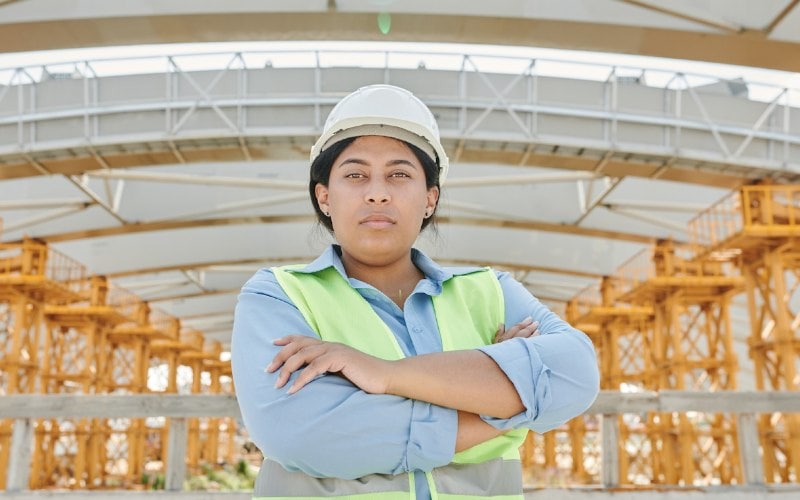
Note: This article’s statistics come from third-party sources and do not represent the opinions of this website.
The construction industry is a male-dominated industry, with the vast majority of employees at all levels being male. This is especially evident in skilled tradespeople, where just 1% of the workforce is female. But it is also a problem at the C level and above.
Only 13% of construction firms are owned by women and only 16% of senior positions are held by women. Although there are signs of some improvement with more than a third of new entrants being female, there are still areas of the construction industry that need to improve if women are to be encouraged to join what is one of the largest industries in the UK.
Below are 14 statistics related to women in the construction industry, including details of some of the barriers that women face.
Click below to jump ahead:
- General Women in Construction Stats
- Roles of Women in Construction
- Trends of Women in Construction
- Barriers to Women Working in Construction
The 14 Women in Construction Statistics in the UK
- 2.2 million people work in the UK construction industry.
- The percentage of female construction workers in the UK is actually higher than in the US, Germany, and other countries.
- Just 1% of skilled tradespeople in the construction industry are women.
- 16% of senior positions in construction companies are held by women.
- 81% of administrative and secretarial roles are held by women.
- The number of women in the industry has actually increased since Covid.
- 37% of new workers in the construction industry are female.
- The number of women in the construction industry peaked in 2008.
- Women own 13% of construction firms in the country.
- 72% of women in the construction industry have experienced gender discrimination.
- 47% of female construction workers have never worked with a female manager.
- Women in construction are paid up to a third less than men.
- The construction industry has the worst gender pay gap of any industry.
- Women are more likely to suffer workplace injury because of ill-fitting safety equipment.
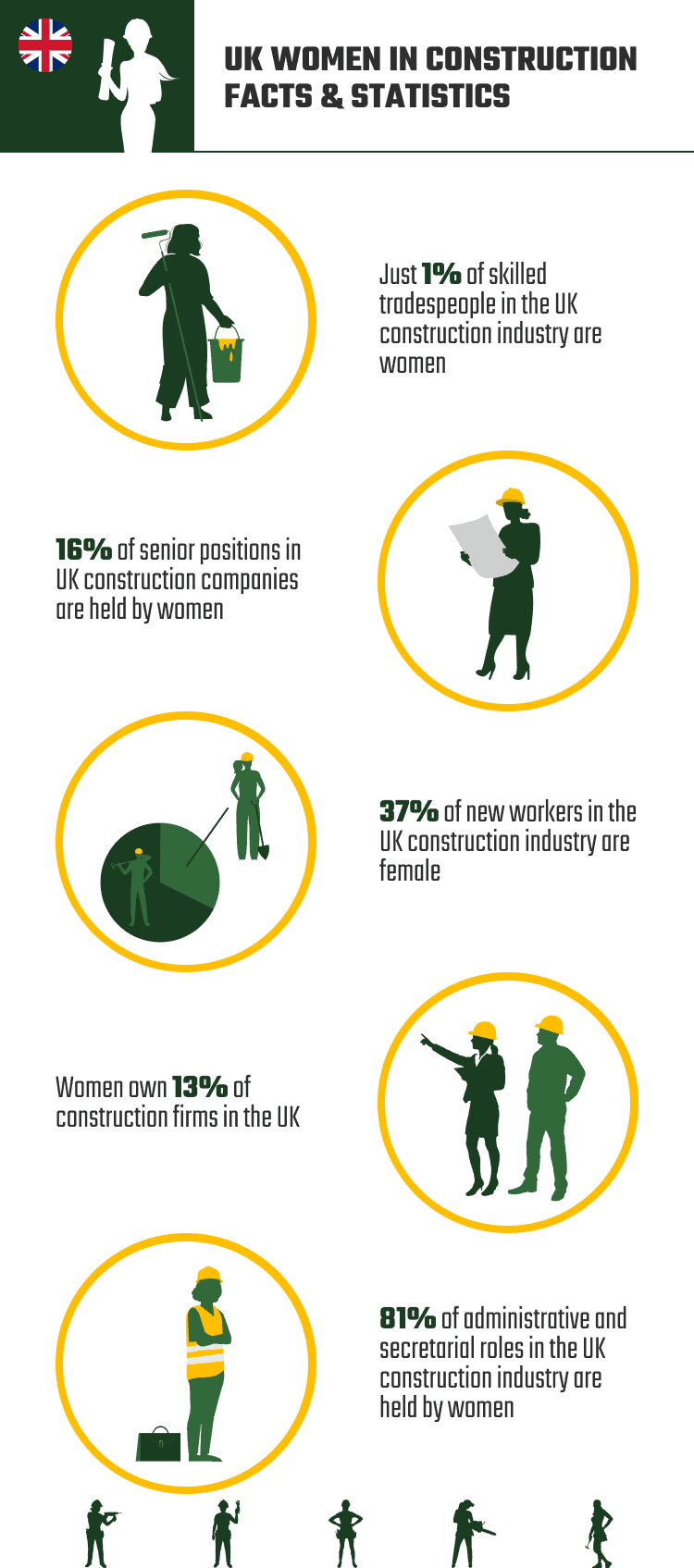
Women in Construction
1. 2.2 million people work in the UK construction industry.
(Statista 1)
The construction industry is one of the largest industries and largest employers in the UK, employing a total of 2.2 million people in 2022. With approximately 32 million working people in the country, this means that around 7% of the country’s working population is employed in various roles within construction.
Industry employment figures had increased from 2.1 million to 2.6 million between 2002 and 2008 before falling to 2.1 million in 2013. The numbers increased again, reaching 2.4 million in 2019, but Covid had a major impact on these numbers.
By the end of 2020, just over 2 million were employed within the sector. Numbers have started to bounce back, but companies and industry analysts have pointed to a shortage of skilled workers.
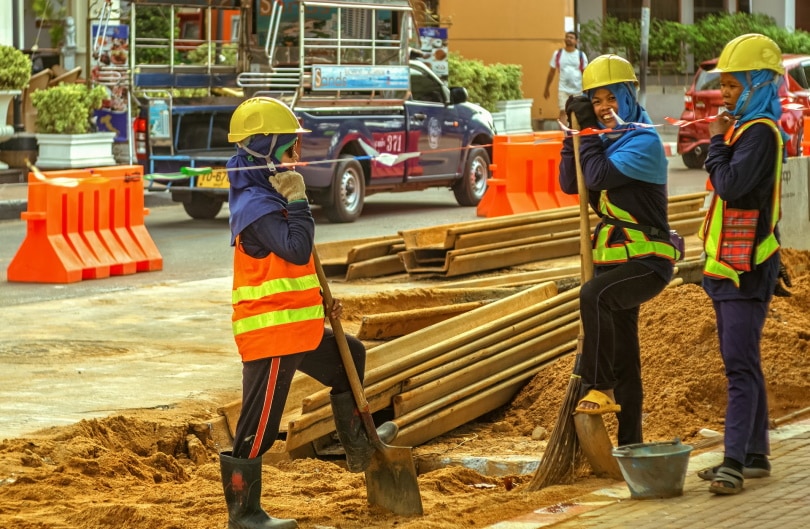
2. The percentage of female construction workers in the UK is actually higher than in the US, Germany, and other countries.
(Plan Radar)
According to some figures, women make up 14% of the total construction industry workforce, which is a very low figure. However, while this number clearly needs improving, it is actually better than in a lot of other countries. Roughly 11% of construction industry workers in the US are female, along with 9% of the workforce in countries including Germany, Italy, and Spain.
 Roles
Roles
3. Just 1% of skilled tradespeople in the construction industry are women.
(Construction News)
There are various roles and levels within the construction industry. Skilled tradespeople are professionals like electricians and plumbers, and women are greatly under-represented in this area of the industry. In fact, just 1% or 1 in 100 tradespeople are female.
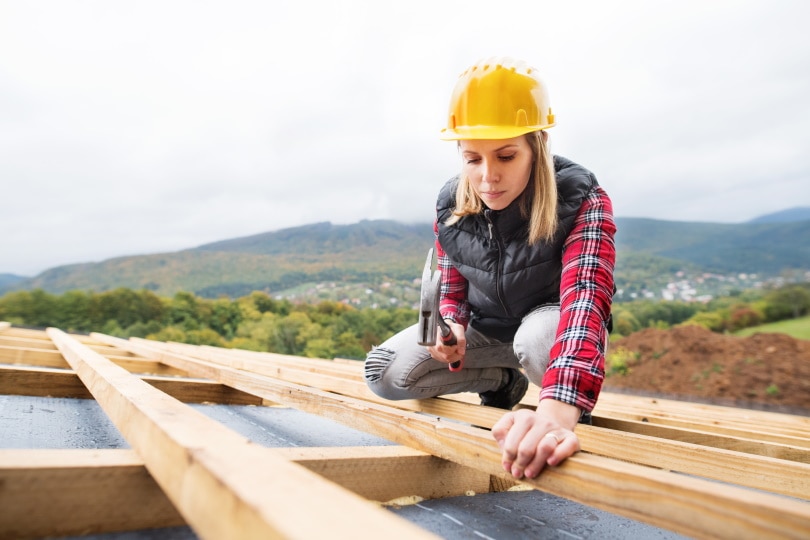
4. 16% of senior positions in construction companies are held by women.
(Construction News)
Although the picture is a little more promising when it comes to senior and C position levels, only 16% of these roles are filled by women. Not only is this bad news for the industry now, but it also means that women in construction view opportunities as being minimal, and this means that fewer women will look to take on senior positions.
5. 81% of administrative and secretarial roles are held by women.
(Construction News)
One area of the industry where the picture is very different is administrative and secretarial roles. More than four in five of these roles are currently filled by women. The number of women in these roles has declined since 2011 when 86.5% of such roles were female.

Trends
6. The number of women in the industry has actually increased since Covid.
(Statista 2)
Covid had a devastating effect on the construction industry as a whole. New build projects and most developments were put on hold, which meant that many staff were furloughed. A lot of companies have also struggled to reopen, with financial problems being the cause of many companies in the industry folding.
For those who were furloughed or couldn’t find work, a large number turned to other jobs in other industries. Despite this, the number of women working in construction has increased since the beginning of the pandemic. In the first quarter of 2020, there were 291,000 women. In the last quarter of 2021, there were 311,000, representing an increase of 7%.
7. 37% of new workers in the construction industry are female.
(Blue Beam)
There are some positive signs with more than a third, or 37%, of new entrants in the industry being female.

8. The number of women in the construction industry peaked in 2008.
(ONS)
While 2008 saw the largest number of employees in the construction industry within the last 20 years, this trend is similar for the number of female employees. In 2008, there were 334,000 women employed in the industry, but this had fallen to 237,000 by 2010.
9. Women own 13% of construction firms in the country.
(Darcy Associates)
When it comes to construction firm owners, 13% of all firms are owned by women and almost 1 in 10 of those firms with revenues of more than half a million are owned by women. This means that more than 40,000 are female-led construction firms.

Barriers
10. 72% of women in the construction industry have experienced gender discrimination.
(Blue Beam)
One of the reasons that women are less likely to work in the construction industry than any other is because of gender discrimination. In one study, 72% of women said that they had endured some form of gender discrimination while working in the construction sector.
11. 47% of female construction workers have never worked with a female manager.
(Darcy Associates)
A lack of women in top roles also puts new candidates off from applying for roles because they believe that it is impossible to land the position. Approximately half of all female construction workers said that they have never worked with or for a female manager.
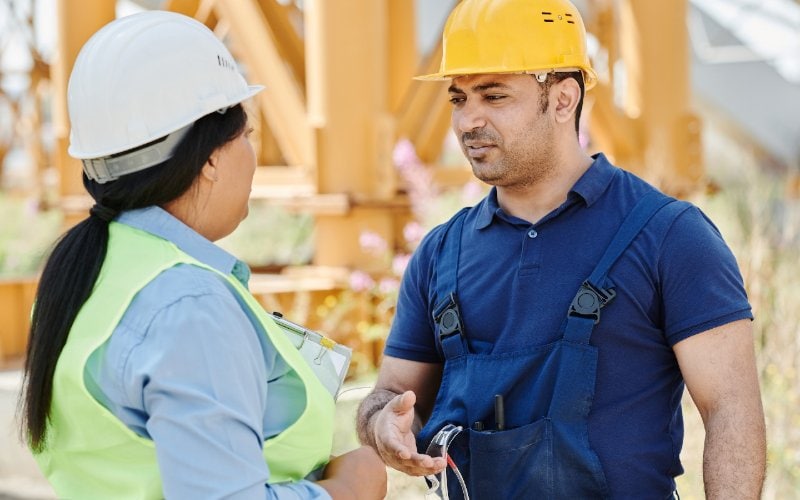
12. Women in construction are paid up to a third less than men.
(Blue Beam)
The most obvious and common form of gender discrimination is in the gender pay gap. Men get paid more in a specific role than women in the same role. In some of the biggest construction firms, the pay gap can be as much as 33%, with most reporting a gender pay gap of around 25%. This means that for every pound that a male worker earns, a female worker in the same role will only earn between 67p and 75p.
13. The construction industry has the worst gender pay gap of any industry.
(Working Mums)
The gender pay gap is reported for a lot of industries, and firms are supposed to keep records of mean and median pay for both genders. Of all the industries monitored, the construction industry is the one with the largest disparity in pay between male and female workers.

14. Women are more likely to suffer workplace injury because of ill-fitting safety equipment.
(Darcy Associates)
The construction industry is so male-oriented that figures show women are more likely to suffer injuries while at work because they are provided with ill-fitting safety equipment that has been designed for men.
Frequently Asked Questions About Women in Construction in the UK
How big is the construction industry in the UK?
In 2021, the UK construction industry was valued at approximately £350 billion. It is responsible for approximately 7% of the country’s GDP. As well as suffering as a result of Covid, the industry is experiencing a slowdown as a result of increased construction costs and rapidly increasing energy prices. (Global Data)
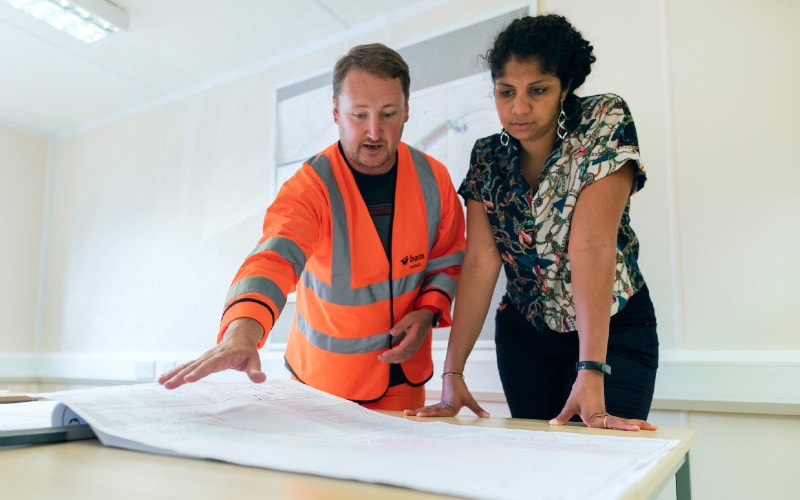
How much do construction workers make?
The average salary for construction workers is £47,500 but this does include all roles and all levels of management. Also taking into account the gender pay gap, this means that the average for women would be substantially lower than this figure. When looking specifically at construction labourers, the average salary is £25,000. (Total Jobs) (Indeed)
What qualifications are needed to work in construction?
Strictly speaking, no qualifications are required to work in the industry. However, most candidates have either gained a college course such as a City & Guilds or have completed a vocational apprenticeship. (High Speed Training)
Is there a shortage of skilled workers in the construction industry?
There is said to be a critical shortage of skilled construction workers. There are several reasons for this lack of skilled workers. Brexit is still having a major impact while the existing workforce is ageing and heading for retirement with few candidates set to replace them. (RICS)
Conclusion
The construction industry is one of the UK’s largest industries and one of the country’s biggest employers. While the numbers do show some signs of improvement, with around a third of new job entrants being female, there is a considerable dearth in the number of women in the industry. Only 14% of total workers in the industry are women, with the majority being employed in administrative and secretarial positions but very few in skilled trades roles or managerial positions.
See also: 12 Carpentry Statistics and Trends in the UK
Featured Image Credit: Mikael Blomkvist, Pexels
Contents


 Roles
Roles
